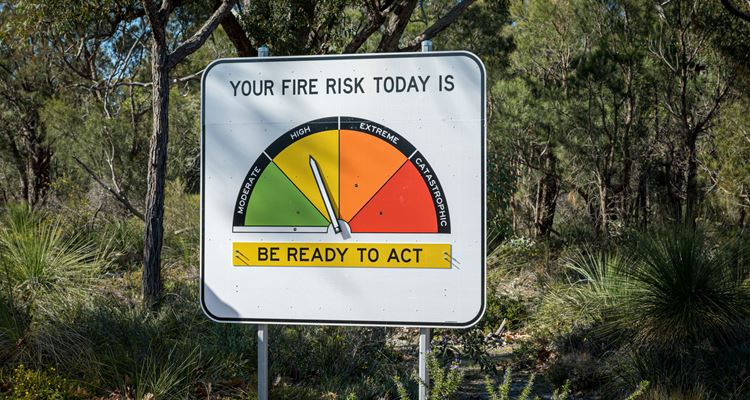Fire Danger Ratings have changed

On 1 September 2022, Fire Danger Ratings (FDR) in Western Australia and across the country changed in line with the new Australian Fire Danger Rating System (AFDRS).
The AFDRS forecasts fire danger using the latest science, bushfire knowledge and a better reflection of Australian fuel types to be more accurate and relevant to where you live.
The system has four FDR compared to the previous six – Moderate, High, Extreme and Catastrophic.
FDR provide important information to help you take action to protect yourself and others from the impacts of bushfires. The higher the FDR, the more dangerous the conditions, and the more difficult it will be to stop a fire if one starts.
When conditions are mild and there is minimal risk, 'No Rating' will be used. This is the white bar sitting under Moderate (pictured above).
There are actions for each level, so you’ll know what to do to protect your life, family and property.
In addition to new FDR, WA has also introduced new Fire Weather Districts. You can check your Fire Weather District and daily FDR on the Emergency WA website or the Bureau of Meteorology website.
The new ratings and what you need to do
Moderate:Plan and prepare.
|
High:Be ready to act.
|
Extreme:Take action now to protect your life and property.
|
Catastrophic:For your survival, leave bushfire risk areas.
|
About the AFDRS
New technology and research have greatly improved our ability to accurately predict fire behaviour and the potential threat to the community.
The AFDRS uses the latest scientific understanding about weather, fuel and how fire behaves in different types of vegetation to improve the reliability of fire danger forecasts.
This strengthens the ability of those working in emergency services to be better prepared, make informed decisions and provide accurate advice to the community.
The new system is also designed to be continuously updatable to take advantage of improving science, data and information into the future.
Community Research
Many in the community could recall FDR information on roadside signs but did not know what actions to take.
Feedback from focus groups held across the country as part of the new system development recommended that there be fewer rating levels, that logical colours and simple words be used and that each rating have action-orientated messages.
The AFDRS uses four colour-coded ratings and plain language to provide clear advice on what action communities need to take.
Fire Danger Rating signs
Roadside signs in Western Australia will start to be replaced later this year. The look and feel of the new signs will be the same in all states and territories across Australia.
You might notice some signs currently have stickers promoting the new four-rating system or information sources like Emergency WA. These are temporary displays and will be replaced by the new signs.

